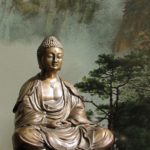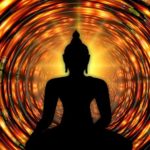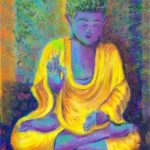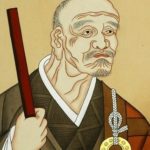Recent Comments
- Chodpa on The Place where the Primordial Speaks
- Chodpa on The Cuckoo of Presence
- Afzar on Bodhidharma’s teacher, Prajnatara
- Vajragoni on Audiobook is released
- Scott on Audiobook is released
-
Recent Posts
Categories
- A Darkness Visible
- A Docetic Assessment
- A Mystical Odyssey through the Sagathakam
- AI Creations
- Akṣayamatinirdeśasūtra
- Akṣhobhya’s Pure Land
- Ālaya-vijñāna
- Anūnatvāpūrṇatvanirdeśaparivarta
- Ariyapariyesanā Sutta
- Ascending the Noble Mountain of Primordial Perfection
- Asceticism
- Ashtavakra Gita in Light of the Unborn
- Audiobook
- Bankei Zen
- Beyond the Ascent
- Beyond the Rainbow Body
- Black Dragon Eye Mandala
- Bodhicitta
- Buddhadharma
- Buddhism’s Black Holes
- Buddhist Anecdotes
- Buddhist Hells
- Buddhist Meditations on the Tarot
- Chuang-Tzu
- Contemporary Musings
- Ḍākiṇī
- Dāsbodh
- Dharmakaya Abbey
- Dharmakaya Stick
- Divine Revelation
- Doctrine of the Void
- Dust Contemplation
- Ekacitta: Advanced Studies in Dark Zen
- Entry into the Dharmadhātu
- Eremitical Dhyani Meditations
- Exploring the Book of Revelation
- Gnostikos
- Hsin Hsin Ming
- Journey to the Center of the Mind
- Karma and Rebirth
- Korean Sŏn
- Kulayarāja Tantra—The Motherly Buddha
- Little Office of Our Lady of the Void
- LSD and Psychedelic Buddhism
- Māṇḍukya Kārikā
- Mañjuśrī Teaches Prajñāpāramitā
- Māra and Satan
- Meister Eckhart
- Mud and Water: Bassui Zen
- Mystagogia
- Nirvana
- Notes from the Iron Stupa
- Nothingness in Nāgārjuna and John of the Cross
- Obscure Religious Cults
- Preparation for the Afterlife
- Primordial Qigong
- Reflections on the Saṃdhinirmocana Sūtra
- Spirituality
- Springtime with Tozen
- Terma: A Mind Film by Vajragoni
- The Afterglow
- The Awakening of Faith
- The Bhagavad Gita
- The Book of Bodhi
- The Cloud of Unknowing in Light of the Unborn
- The Diamond Sutra
- The Divine Ātman
- The Divine Liturgy of Vajrasattva
- The Doctrine of Awakening
- The Dragon Mind of Zen Tarot
- The Elucidation of Consciousness
- The Experience of No-Self
- The Great Perfection of the Unborn Mind: A Book of Privy Counseling
- The Heart Sutra
- The Hermit's Den
- The Khaggavisāṇa Sutta: A Rhinoceros Horn
- The Lankavatara Sutra
- The Lankavatarian Book of the Dead
- The Lion's Roar of Queen Śrīmālā
- The Lotus Sutra
- The Mahāparinirvāṇasūtra
- The Naga Chronicles
- The Platform Sutra
- The Ratnagotravibhāgaśāstra
- The School of the Spirit
- The Secret Golden Light of the Unborn
- The Soul
- The Śūrańgama Sūtra
- The Sutra of Primordial Enlightenment
- The Tathāgatagarbhatārā Tantra
- The Udāna
- The Unborn Mind Mythos
- The Unborn Mind Sessions
- The Unborn Odyssey: A Novel
- The Vajrasamādhi Sutra
- The Vimalakirti Sutra
- The Yogasūtras of Patañjali
- The Zen Teaching of Bodhidharma
- The Zen Teaching of Instantaneous Awakening
- The Zen Teachings of Huang Po
- Theologia Mystica
- Tozen Teaching
- Tsung-mi: An Intimate Study
- Unborn I Ching
- Unborn Light Reiki
- Uncategorized
- Vasubandhu and the Absolute
- Wisdom from the Masters
- Wordsworth and Zen
- Yoga of the Manomayakāya
- Zen
- Zuowang
Archives
- October 2024
- August 2024
- February 2024
- January 2024
- December 2023
- November 2023
- October 2023
- September 2023
- August 2023
- July 2023
- June 2023
- May 2023
- April 2023
- March 2023
- February 2023
- January 2023
- December 2022
- November 2022
- October 2022
- September 2022
- August 2022
- May 2022
- April 2022
- March 2022
- February 2022
- January 2022
- December 2021
- November 2021
- October 2021
- September 2021
- August 2021
- May 2021
- April 2021
- March 2021
- February 2021
- January 2021
- December 2020
- November 2020
- October 2020
- September 2020
- August 2020
- May 2020
- April 2020
- March 2020
- February 2020
- January 2020
- December 2019
- November 2019
- October 2019
- September 2019
- August 2019
- June 2019
- February 2019
- January 2019
- December 2018
- October 2018
- August 2018
- April 2018
- March 2018
- February 2018
- January 2018
- December 2017
- November 2017
- October 2017
- September 2017
- August 2017
- May 2017
- April 2017
- March 2017
- February 2017
- January 2017
- December 2016
- November 2016
- October 2016
- September 2016
- August 2016
- July 2016
- May 2016
- April 2016
- March 2016
- February 2016
- January 2016
- December 2015
- November 2015
- October 2015
- September 2015
- August 2015
- July 2015
- June 2015
- May 2015
- April 2015
- March 2015
- February 2015
- January 2015
- December 2014
- November 2014
- October 2014
- September 2014
- August 2014
- May 2014
- April 2014
- March 2014
- February 2014
- January 2014
- December 2013
- November 2013
- October 2013
- September 2013
- August 2013
- May 2013
- April 2013
- March 2013
- February 2013
- January 2013
- December 2012
- November 2012
- October 2012
- September 2012
- August 2012
- May 2012
- April 2012
- March 2012
- February 2012
- January 2012
- December 2011
- November 2011
- October 2011
Meta
Monthly Archives: February 2017
No-Thought

33. Q: What does it mean when a sutra discusses “the twenty-five elements of existence”?
A: This indicates the nature of undergoing future rebirth or incarnations within the six realms of impermanence. Because of a delusion-filled existence during their life-cycles sentient beings become heavily laden with all manner of karmic aftereffects, and thus experience future rebirths commensurate with these karmic ramifications—reincarnation. However, if in one’s present life-cycle one is determined to transcend these karmic states by embracing the way of the Unborn, then the severing of all past karmic associations becomes a real possibility. In this way one is forever linked with the Dharmakaya which is none other than the Buddha Body of the Absolute—Buddhakaya.
Q: So, then, what are the different qualities of these twenty-five elements?
A: Their essential nature is of one substance. Yet, when each of them are named given their various functions, they are said to be twenty-five. This all breaks down as the ten virtues, ten vices, and the five aggregates.
Q: What are these ten virtues and ten vices?
A: The ten vices are as follows: killing, stealing, recklessness, lying, an abhorrent tongue, decadence, defamation, greed, anger and deceitful views. The ten virtues are simply the absence of the ten vices.
The Four Wisdoms

28. Q: It’s stated that the eight consciousnesses are turned into the Four Wisdoms, and then the Four Wisdoms bind together forming the trikaya; which, then, of these eight states will pool together to form one Buddha-wisdom and then, which Wisdoms are then said to be the transformation into One Consciousness?
A: The five senses (smell, taste, etc.) relate to the five states of consciousness thereby forming the Perfecting Wisdom. Intellect (sixth state), or the mental consciousness, becomes the Wonderful Observing Wisdom. The seventh state with its discriminating awareness becomes the Universal Wisdom. Lastly, the eighth consciousness alone becomes the Mirror-Like Wisdom.
Q: Well, then, do the Four Wisdoms really differ from one another or are they the same?
A: In Substance they remain the same, only the names vary.
Q: Well if their Substance is identical, why do they bare different appellations? And if it is true that these designations are only used as expedients, what is it that is constitutive of one substance that is named “Great-Mirror Wisdom”?
A: That which is still and void—motionless—is the Great Mirror Wisdom. That which is capable of facing mind-defilements without attaching to them through love or aversion, is the Universal Wisdom. That which has the ability to discriminate and discern the wide-field of sensory impressions, while at the same time never experiencing unbridled and reactionary patterns of thought is Wonderful Observing Wisdom. That which can direct all the sense faculties into observing phenomena without being constrained by dualism is known as Perfecting Wisdom.
Q: When the Four Wisdoms combine to form the trikaya, which of them solely becomes one body, and which of them comes-together to form one Body?
A: The Great Mirror Wisdom solely makes up the Dharmakaya. Universal Wisdom exclusively constructs the Sambhogakaya. While both Wonderful Observing Wisdom and Perfecting Wisdom constitutes the Nirmanakaya. Of course, the three Bodies are only specified differently to expediently assist those worldlings who lack the necessary insight to comprehend their unifying nature. For those who are fruitfully endowed with Buddha-gnosis, their Absolute Nature is neither rooted in permanence nor non-permanence.
Posted in The Zen Teaching of Instantaneous Awakening
Tagged Aksobhya;, Amitabha, Amoghasiddhi, Buddhakaya, dharmadhātuprakṛtijñāna, Five Dhyani Buddhas, Five Skandhas, Great-Mirror Wisdom, Perfecting Wisdom, Ratnasambhava, Supramundane Dharma, The Middle Way, Universal Wisdom, Wonderful Observing Wisdom
Leave a comment
The Buddha Principle

22. Q: It says in the Precepts of the Bodhisattvas: “When sentient beings contemplate the Buddha Principle, they then assume the stature of all Buddhas, which is analogous to the Great Enlightenment; in so doing they become noble children of the Buddhas.” Please explain.
A: The Buddha Principle signifies perfect clarity and purity of mind. In undertaking this perfect nonattachment, one then transcends all skandhic obstructions and thus fully recognizes the Buddha Principle. All of the preceding Buddhas engaged this perfect principle and thereby remained impervious to all defiled dharmas and thus won the crown of Buddhahood. If one engages this perfect mind principle, then one is said to receive the merit of all Buddhas; hence, they will soon be knocking on the door of Buddhahood itself. If one wins this perfect Mind Illumination then one is in league with the Great Enlightenment. These noble ones are truly children of the Buddha and their mind engenders holy wisdom.
The Nature of Dhyana

18. Q: What does it mean when The Mahaparinirvana Sutra states, “Excessive Dhyana over and above Wisdom issues in more ignorance (avidya), yet at the same time excessive wisdom canceling-out quality time spent in Dhyana leads to the issuance of wrong-views; however when Dhyana and Wisdom are equally observed best procures liberation?
A: Right Wisdom best discerns between good and evil, while Dhyana demonstrates that in marking these discernments one remains wholeheartedly unattached and undefiled, untempted by the allures of either love or hate. Thus Right Wisdom and Dhyana function on an equal footing.
Q: That Sutra also says “wordlessness with nothing to discuss, this is the nature of Dhyana.” Yet, are we not able to be in Dhyana whether being silent or speaking?
A: In referencing Dhyana just now I was referring to the manner of “perpetual-Dhyana”, which is the same whether keeping silent or during occasions of speech. What is the reason for this? The nature of Dhyana does not change from its efficacious functionality whether engaged in speaking or being non-engaged in times of silence. In the same fashion, when we contemplate the nature of voidness when in relationship with forms, this voidness is unaffected whether these forms are mentioned in passing speech or during times of deep-samadhis. This same rationale holds firm when considering the nature of skandhic functions, like seeing, hearing, touching, and smelling. Since our Self-Nature remains void to any ramifications of skandhic consciousness and its many forms, IT maintains ITS natural voidness under all circumstances. Thus, being void, IT is free from all attachments and this freedom empowers the synchronized function of Right Wisdom and Dhyana whatever the state of natural affairs. Bodhisattvas employ this Dharma of Voidness when entering into conjunctional alliance with the Absolute. It is written that when Dhyana and Right Wisdom function in this manner it is known as Right Deliverance. In helping to clarify this I give you the following prime example: Consider the semblance of a ‘Bright Mirror’. When its light reflects an object is its brightness diminished? And during the times when it is not reflecting something is its brightness ever weakened? Why is this the case? The Bright Mirror has neither feeling nor any other kind of sensation. When sensation is absent neither movement nor absence of movement is effectively present. Another vivid illustration is sunlight. Its light illuminates the world and when not in position it does not, but is its vivifying light ever absent? In the same manner sunlight is itself devoid of sensation. Now that same principle of being able “to shine” is instilled in Right Gnosis—it has an illuminative effect—while that perfect one-pointedness of non-wavering is reflective of Dhyana. When the diligent Bodhisattva employs an equal measure of Dhyana and Right Wisdom, it creates the opportunity for the reception of Sambodhi, or the one-pointedness of Mind that leads to Supreme Enlightenment. Let it also be known, though, that this spiritual enterprise is not void of a holy ambience.
Q: What then is the manner of this holy ambience?
A: It never gives rise to duality, it is rather in perpetual union and holy alliance with the Unborn, which institutes the fragrance of an omnipresent holy ambience.
The Dharmakaya of the Buddhadharma

15. Q: It states in The Vaipulya Sutra that there are five kinds of Dharmakaya: The Dharmakaya of the Absolute; the Dharmakaya of merit; the Dharmakaya of the Dharma-nature; the Dharmakaya of Infinite Transformations; and the Dharmakaya of voidness. Which of these is in reference to our own bodies?
A: To arrive at the awareness that Mind can neither be created nor destroyed is the hallmark of the Dharmakaya of the Absolute. To awaken to the realization that Mind encompasses all things is known as the Dharmakaya of merit. Discerning that Mind is not mind and its discriminations is to Self-realize the Dharmakaya of True Dharma-nature. Teaching the Buddhadharma to sentient beings according to their potential (through expedient means) is the Dharmakaya of Infinite Transformations. The comprehension that Mind is neither being nor non-being, formless and imperceptible is the Dharmakaya of the void. Once again, to fully absorb this teaching, remember that it is not something to be achieved. Thus, knowing that there is nothing attainable or achievable is the Self-Realization of the Dharmakaya of the Buddhadharma. Therefore, anyone who assumes that they can grasp and somehow self-accomplish this without Noble Buddha-gnosis are those who uphold such perverted heterodox belief-systems and are thusly anathema to the Way of the Unborn. The Vimalakirti Nirdesha Sutra states that when Shariputra inquired of a devakanya, “What is it that you have attained that has afforded you supernatural powers?”…the devakanya responded, “even though I have not gained or achieved anything in such matters, I am who I truly am in the Unborn.”
The Three Methods

11. Q: You stated that Right Gnosis is the function of the Gateless Gate of Spontaneous Illumination—what do you mean by Gnosis?
A: The Gnosis that empowers one to break free from the chains of all duality. Its function is the very nature of voidness which is representative of the all-encompassing Substance; IT is free (void) from all that IT is not, whilst also celebrating the Fullness of Its own creative actuosity; thus the substance that undividedly generates non-dual Gnosis itself.
Q: How does one penetrate the gateless gate of this non-dual realization?
A: By way of the perfection of beneficence (dana-paramita).
Q: But how can this be? The Blessed One emphasized six paramitas that must be won on the Bodhisattva-path, yet you mention just this one; how, then, does this one empower us to enter through that gateless gate?
A: The deluded ones do not recognize that the other five emanate from just this particular one; thus, by its practice the others will be fulfilled.
Q: Please explain why it’s called the dana-paramita.
A: By being beneficent one is able to drop all former dualistic proclivities that prevent proper union with the Unborn.
Q: Please expound further…
A: It entails dropping all dualistic assertions, like being and non-being, existence and non-existence, love and hate, pure and impure; through beneficence one drops all these attachments and simply returns to the good of the One, or the Mind that is void of all that is not Itself. Our True Nature does not dwell on anything else whatsoever; hence, THAT which contains no foreign-thing is the nature of Absolute Reality—one which is revealed in the Tathagatakaya, or the perfect embodied mindfulness of the Tathagatas. As the Diamond Sutra states, those who have abandoned all formal realms and its myriad objects are Buddhas.
Q: Once again, however, the Blessed One did emphasize six paramitas—why do you seem to reject the other five for this exclusive one?
A: The Sutra of the Questions of Brahma states that Bodhisattvas who have dropped all former attachments fulfill the dana-paramita; thus, if there are no dharmas left, one is centered in quiescence. The worldlings become bogged-down with a myriad of attachments which keep them on the perpetual-wheel of samsara. I therefore exhort you adepts of the Unborn Way to stay centered in quiescence which brings to perfection the other five paramitas.
Being Bodhiminded

7. Q: When a sound is made, there is said to be the sense of hearing. When no sound is present, does one still have this sense of hearing?
A: The sense of hearing is limited to those worldlings who have no avenue to the Unborn. For those who are Bodhiminded, there is more than just the sense of hearing, there is true inner-listening.
Q: How can one have this inner-listening if there is nothing present to listen to?
A: In procuring the inner-Dharma ear, one must first put on the Unborn Buddha Mind, thus one is Bodhiminded. In being Bodhiminded one exceeds mere surface reality and develops the fine Dharma-faculty of inner-listening to the Deathless Sound of Suchness; no-thing being present is irrelevant to this transcendent enterprise.
A: Well, then, who or what does the listening?
Q: The function of this listening is bestowed upon those who are attuned with the Bodhimind. Thus “the listener” is one who comes to know what it means to be Bodhiminded.
Non-Abidance

3. Q: Where does the Unborn Mind dwell?
A: Dwelling in imageless non-abiding is Its True Abode.
Q: What is this imageless non-abiding?
A: Imagelessness means abiding in no-thing, whether good or evil, being or non-being, neither within nor without, nor somewhere in-between. This is the meaning of being beyond the void of voidness, since there is really nothing to settle-in nor avoid. In this fashion one IS within the motionless-Unborn Mind that dwells neither here nor there, but everywhere for those who behold IT with imageless-eyes.
Q: So, then, what is this imageless-mind really like?
A: IT has neither form nor formlessness, no substrata of sense or thought, volition or mortal consciousness. IT is colorless, such as being devoid of yellow or green, blue or white. Unborn and deathless, IT is perfect quiescent stillness. Such then, is the Imageless Mind—the unadulterated Buddhakaya.
Spontaneous Illumination

Shastra on the Importance of Entering the Path of Spontaneous Awakening
1. I reverently bow before all the Buddhas and Bodhisattvas from the Ten Directions, as well as all Awakened Beings who espouse the Bodhimind.
In composing this humble Shastra, I am aware that, indirectly, certain deficiencies may disrupt the pristine eminence of the True Nature of the Unborn Mind. If this be so, I pray that the intercession of the Blessed Tathāgata may intervene to reveal the unobstructed Buddhagnosis that will lead many to discern the undividedness of their own Bodhimind and Spirit.
Posted in The Zen Teaching of Instantaneous Awakening
Tagged biguan, Bodhimind, Ch'an, Original Mind, samadhi, Unborn Mind
Leave a comment
The Zen Teaching of Instantaneous Awakening

The renowned teacher of Huangbo and Linzi, Dazhu Huihai lived and taught during the Tang dynasty in the late eighth century. While any official dating of his birth is unknown, he was born in Jianzhou in Southeast China and became a monk at Daozhiego in the monastery Dayun in Yuezhou. He later journeyed to Jiangxi where he studied with the great master Mazu, a disciple of the sixth patriarch Huineng, for six years. It was with Mazu that his great transformation occurred, most notably through his first meeting with the master:
Posted in The Zen Teaching of Instantaneous Awakening, Zen
Tagged Bodhimind, Ch'an, Dazhu Huihai, Dhyana, Mazu
1 Comment
